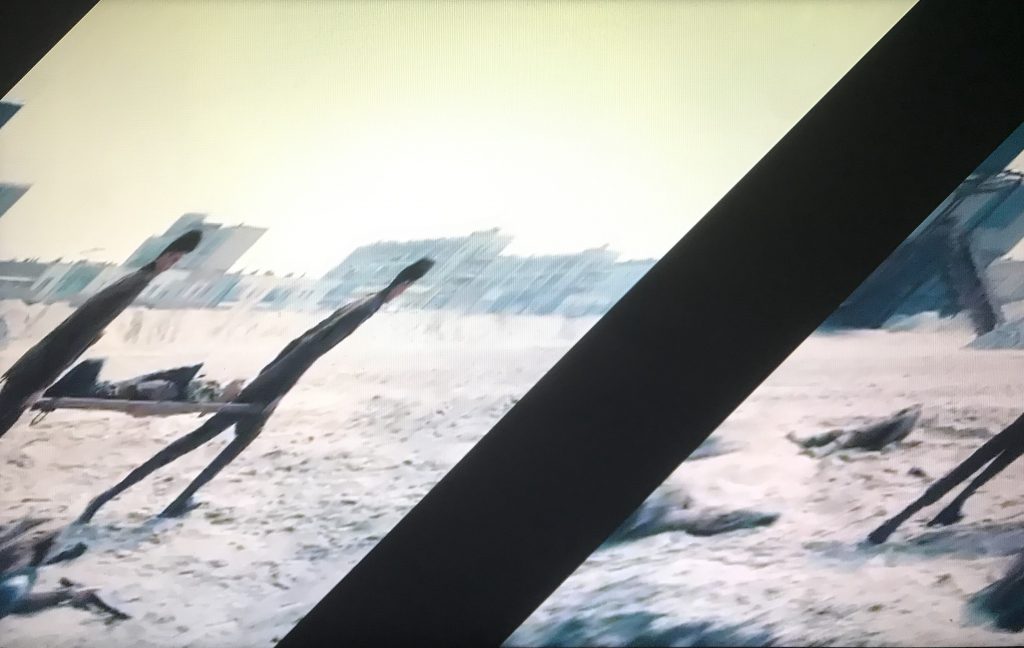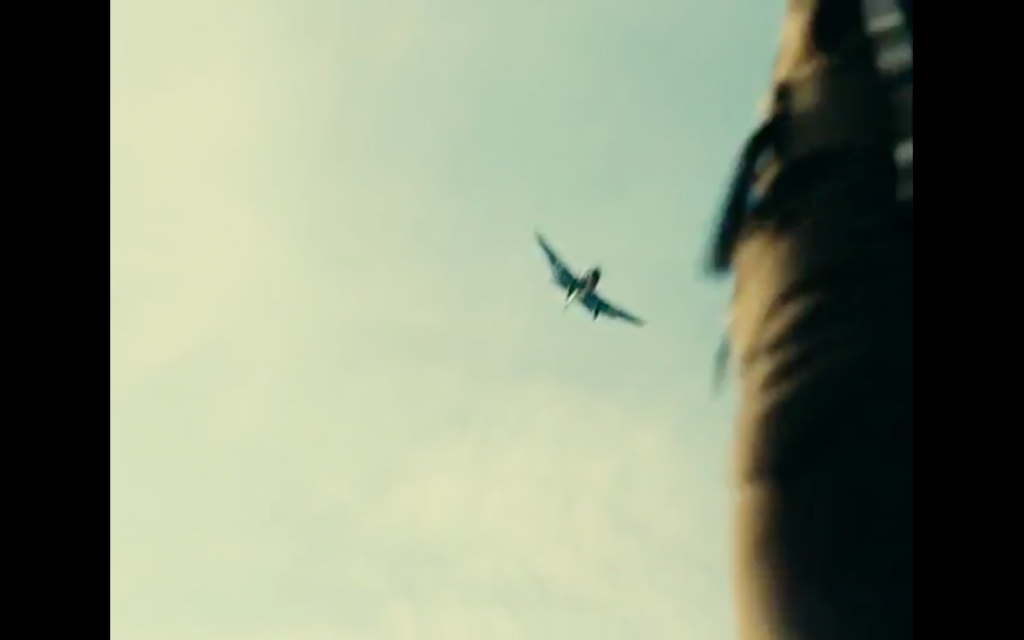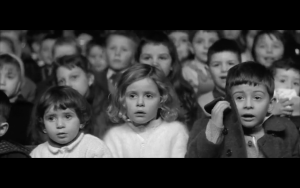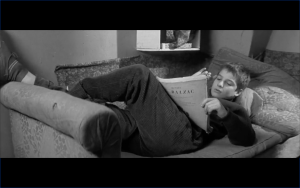“Intelligent filmmaking” and director “Christopher Nolan” are two inseparable terms. With each viewing, one can learn and discover something new about this genius director’s way of thinking. Dunkirk is an amazing example of how Nolan masterfully incorporates film techniques as a medium to convey a very meaningful message about reality in war films.
If you have seen Dunkirk in the movie theater, the screen shot below is how you will view the whole film. The film is shot in 65 mm but the distortion is clearly seen. There is clearly always a feeling of disconnection and uncanny with what is on screen because of this usage. Standing ovation to cinematographer Hoyte van Hoytema here.

However, if you are seeing the film on your computer, try pausing the film while watching and see what happens.

The image on screen transforms into 35 mm. Here is where the genius lies. Once the viewer is taken out of the filmic screen and once a stop is put to the flow of the film, somehow we are taken back to a 35mm screen which looks more real. The uncanny feeling disappears and we are taken back to “reality”.
However, at the end of the day, this just leads to more questioning about the thin line between what is real and what is not. This can be applied to the concept of war and footage. Is every footage that is montaged together a piece of reality or do our minds just make it to be?
With Tenet on the way from Nolan, we will just keep continuing asking these questions.
Nihal Gürsoy
















Petra
Amazing analysis